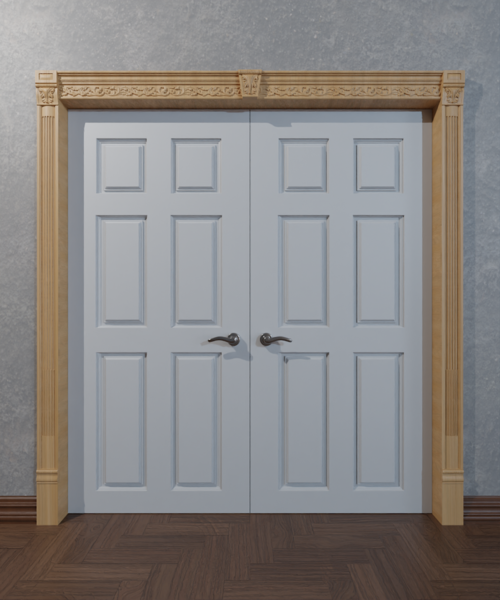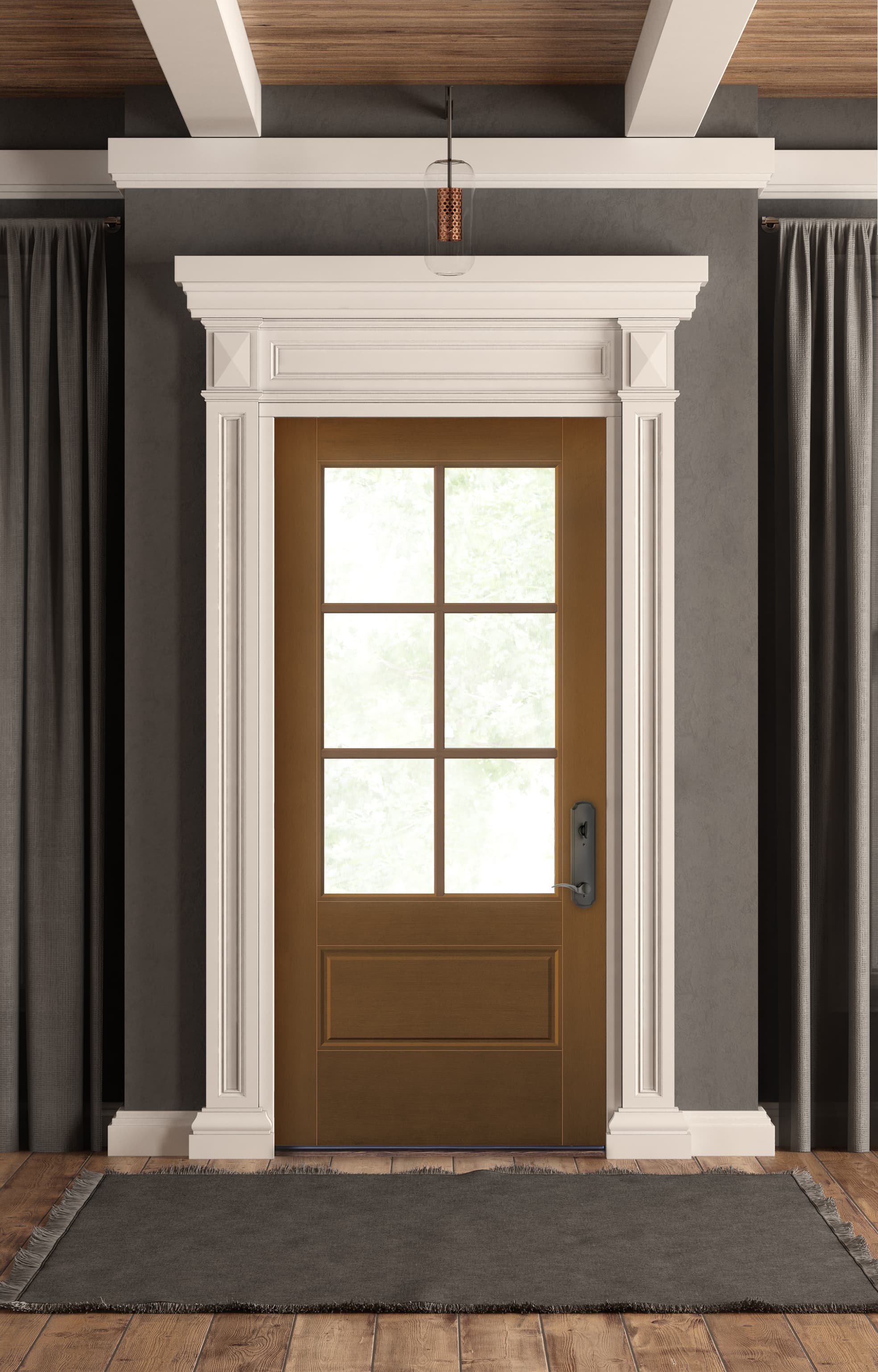When it comes to beautifying your home, few elements can make as significant an impact as decorative door trim molding. Not only does it add character and elegance, but it also frames your doors beautifully, enhancing the overall aesthetic of your interiors. In this comprehensive guide, I’ll share my personal experiences and insights into decorative door trim molding, covering everything from types to installation and maintenance.
Understanding Decorative Door Trim Molding
Before diving deep into decorative door trim molding, it’s essential to understand what it is and why it matters. Decorative door trim molding refers to the embellishments added around doors, which can elevate the design and atmosphere of a room.
The Purpose of Door Trim Molding
- Aesthetic Appeal: Door trim adds a finished look to any space.
- Framing: It frames the door, drawing attention to it as a focal point.
- Protection: It helps protect walls from damage caused by door swings.
Types of Decorative Door Trim Molding

There are various types of decorative door trim molding available, each serving different aesthetic styles and functions. Below, we’ll explore the most popular options.
Crown Molding
Crown molding is a decorative element that sits at the junction of walls and ceilings. When installed around door frames, it creates an elegant transition.

Casing Molding
Casing molding is the most common type used around doors. This molding can be either simple or intricate, depending on your design needs.
Baseboards
While traditionally used at the bottom of walls, baseboards can also be incorporated into door trim designs to create a seamless look.

Panel Molding
Panel molding can create depth and dimension around doorways, adding visual interest to plain doors.
Comparison Table: Types of Decorative Door Trim Molding

| Type | Best For | Style | Cost |
|---|---|---|---|
| Crown Molding | Elegant Spaces | Traditional, Modern | $$$ |
| Casing Molding | All Door Types | Versatile | $$ |
| Baseboards | Completing Room Design | Traditional | $$ |
| Panel Molding | Stylish, Formal Rooms | Classic, Elegant | $$$ |
Choosing the Right Decorative Door Trim Molding

Selecting the ideal decorative molding can be a challenge. Here are some essential factors to consider based on my experiences:
1. Style of Your Home
- Modern homes may benefit from sleek, minimalistic trim.
- Classic or traditional homes could opt for elaborate designs.

2. Size of the Doorway
The size of your doors and hallways will influence the size and style of the trim. Larger trims work well in grand spaces, while smaller trims suit intimate settings.
3. Material Considerations
Molding can be crafted from various materials, each with its pros and cons:
- Wood: Durable, classic look, but can be expensive.
- Polyurethane: Lightweight, easy to install, but may lack the richness of wood.
- MDF (Medium Density Fiberboard): A cost-effective and versatile choice, though it may not withstand moisture well.
4. Finish and Color
Trim can be painted or stained. Painting white or light colors can create a fresh look, while darker finishes add warmth.
Installation Process for Decorative Door Trim Molding
Installing decorative door trim molding may seem daunting, but with the right tools and guidance, it can be a rewarding DIY project. Here’s a step-by-step process based on my personal experience:
Tools You’ll Need
- Miter saw
- Pneumatic nail gun or hammer
- Measuring tape
- Level
- Wood glue (optional)
- Caulk and caulking gun
- Primer and paint or stain
Step-by-Step Installation Guide
Step 1: Measure and Cut
Begin by measuring the height and width of the door frame. Using a miter saw, cut your molding pieces to size, ensuring to create angled cuts for corners.
Step 2: Position and Secure
Position the cut pieces around the door frame. Use a level to ensure everything is straight. Secure the molding with a nail gun, ensuring it’s fastened to the wall and door frame.
Step 3: Fill Gaps
Use wood filler to fill any gaps or nail holes. Once dry, sand it down for a smooth finish.
Step 4: Caulking
Caulk any seams between the trim and wall to create a seamless look.
Step 5: Painting or Staining
Finally, paint or stain your trim to match your decor. Use primer first if you’re painting raw wood.
Maintenance of Decorative Door Trim Molding
Once you’ve installed decorative door trim molding, maintaining it is essential for longevity. Here’s what you need to know.
Cleaning Techniques
Regularly dusting with a microfiber cloth will prevent build-up. For tougher stains, a mixture of mild soap and water works wonders. Avoid harsh chemicals that might damage the finish.
Repairing Damage
To repair scratches or dents, consider using a wood filler that matches the trim color. For painted trims, a little touch-up paint goes a long way.
Pros and Cons of Decorative Door Trim Molding
Like any home decor element, decorative door trim molding comes with its advantages and disadvantages. Here’s a detailed look:
Pros
- Enhances aesthetic appeal
- Increases property value
- Provides protection to door frames
- Offers a wide range of styles and materials
Cons
- Can be expensive, depending on materials
- Installation can be time-consuming and requires skill
- Potential for damage if not maintained
Personal Experience with Decorative Door Trim Molding
When I first decided to install decorative door trim in my home, I felt a mix of excitement and apprehension. I had ventured into DIY projects before, but this was my first foray into molding. After choosing simple casing molding, I took my time measuring and re-measuring. The satisfaction I felt when I finally stepped back to admire my handiwork was indescribable. It was a simple addition that dramatically transformed my living space.
FAQs About Decorative Door Trim Molding
1. What is decorative door trim molding made from?
Decorative door trim molding can be made from wood, MDF, or polyurethane, each offering different aesthetics and benefits.
2. How much does decorative door trim molding cost?
The cost of decorative door trim molding can vary widely based on material, style, and quality. Expect to pay anywhere from $1 to $10 per linear foot.
3. Can I install decorative door trim myself?
Yes! With the right tools and instructions, many homeowners successfully install decorative door trim as a DIY project.
4. How do I choose the right style of door trim molding?
Consider your home’s architectural style, the size of the door, and your personal preferences when choosing the right style of door trim molding.
5. Can decorative door trim molding increase my home’s value?
Yes, well-chosen and installed decorative door trim can enhance the aesthetic appeal of your home, potentially increasing its value.
Conclusion: Elevate Your Home with Decorative Door Trim
In conclusion, decorative door trim molding is an effective and beautiful way to enhance your home’s interiors. Whether you choose simple casing or elaborate crown molding, the right trim can transform any space. Embrace the DIY spirit, and you might find that you not only beautify your home but also create lasting memories along the way.